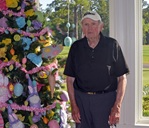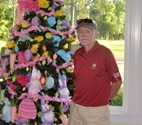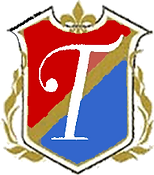 |
The Tradition at Willbrook Plantation SPRING 2025 NEWSLETTER |
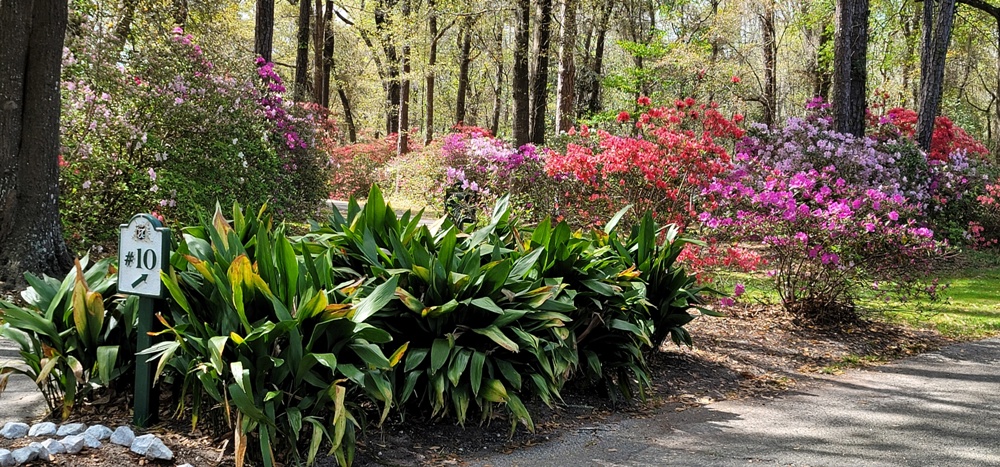 |
|
| PAGE 1 |
|
|
| ||||||||||||||||||||||||||||||
| PAGE 2 |
FROM THE DESK OF THE PRESIDENTWe made it through a very snowy winter, at least by South Carolina standards. Spring has arrived, the temperature is rising, the flowers are blooming, the grass is growing and we are spending more time outside. Some of the time is enjoying the weather while other time is spent beginning our yard work. Covenants Reviews Front Yard Furniture The BOD has discussed this issue at length. The ARB has been instructed to no longer allow the installation of front yard patios. We have also instructed those homeowners with front yard patios that furniture cannot be left on the patio. The decision is the result of receiving feedback from a number of realtors who suggest that having furniture left in the front of the house will reduce property values. One of the Board's primary goals it to maintain or increase property values. Front yard patios can still be used but the furniture must be moved from view after use. 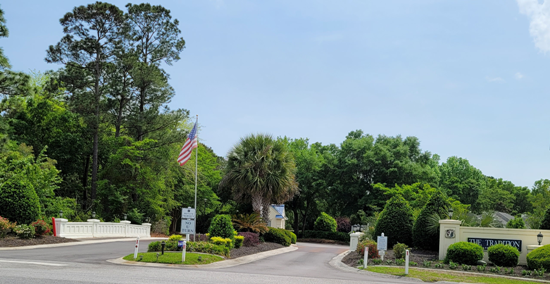 Common Area vegetation The Home and Garden Club has assisted our landscape company in the selection of the vegetation to be planted in the entrances and clubhouse. We are already seeing improvements. As this is a big project with the potential for significant expense, we are taking our time to do it properly. I would like everyone to thank the members of the Home and Garden Club for their assistance in making this happen. I would like to personally thank Debbie Moeller and Reyn Steadman for their hard work in making this happen. |
Common Area vegetation continued..
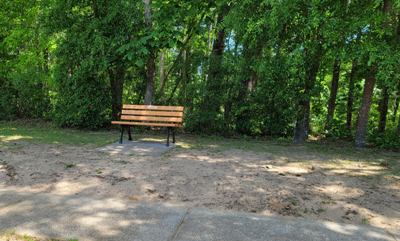 We have also met with True Blue nursery to provide recommendations for other common areas within the community. Over the years these common areas are not as green and attractive as we would like. Much of the problem is the growth of the trees which significantly reduces the amount of light the grass receives which impedes growth. We have looked at trimming the trees but that would only be a temporary solution. We are looking at using different ground cover which does not require as much sunlight to grow. As with the other common areas this will be done over time. Updating our Governing DocumentsCovenants, Conditions & Regulations (CCR's) and ByLaws As mentioned at the Annual Meeting the Rules and Regulations Committee has been formed to review our governing
documents to bring them up to date. The CCRs have been in existence since the community was founded
in the early 1990's. They also incorporate most, but not all of the supplements and amendments
that have been voted on and approved. As the community was developed by The Centex Corporation,
their name is included throughout the document.
As they have not been part of the community for over 20 years, we are removing their reference. 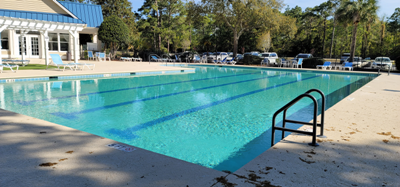 Pool Upgrades |
| PAGE 3 |
|
Pool Furniture Road Replacement
|
 Business Solicitation |
||
| Please stop driving on the grass
| |||||||||||
| PAGE 4 |
Welcome new Residents!
**Note from the EditorOver the years, as newsletter editor, I have printed wonderful stories from our residents, most are similar, as to why they came to Tradition. Sometimes coming here was fortuitous, by recommendation and others were invited by friends or family to visit and decided to make this their home as well. .jpg) Monarch Court, with the last vacant lot on our street for sale, John and I are the last surviving original property owners.
Although I often threaten to move to Montana, it won't be any time soon. |
.jpg) Why We Moved to Tradition by Jennifer & Eric Atkinson
Through the years we have vacationed in this local area with our children.
Since we are big outdoor people who love the ocean, we have interests like swimming, kayaking,
gardening, etc. We absolutely loved the locale and found ourselves occasionally saying to each other
We ultimately found this lovely house at 57 Monarch Court and purchased it. Unfortunately we are getting off to a bit of a slow start because we took some time to have the interior painted as well as making some minor changes inside. We did get the chance though, to meet a few of our immediate neighbors and experienced wonderful hospitality. Eric is retired with 30 years in sales from the Sysco Corporation, the largest food and beverage distributor
in the US. He had already declared full time residency in SC, and had temporarily been living in a rented condo here.
Eric golfs, we are both familiar with and enjoy Mexican Train dominoes,
and have checked out our local public library.
Jennifer is interested in finding a local book club as well as eventually participating on many of the activities
right here in Tradition. But currently we are both up to our eyeballs in boxes. One big draw for us was when we heard that Tradition residents are fully invested in their community; we were looking for a place to live that was similar to our past community where residents were active within the neighborhood. It sounds very much like we will not be disappointed! |
| PAGE 5 |
| ||||
The idea for the Peace Corps originated in the late 1950s and was signed into law by President John F Kennedy in 1961.
Its three main goals were:
When the Peace Corps was founded, the world was struggling with the Cold War.
It grew from 900 volunteers serving 16 countries in 1961 to over 240,000 volunteers and 142 host countries.
Volunteers were to work along side residents of other countries, speak their language,
and live on a level comparable with their counterparts there.
They were assigned to specific projects based on their skills, education, and experience.
A few notable past Peace Corps volunteers have been
Tradition residents, Dale and Elene Hertweck have first hand knowledge as Peace Corps volunteers. They served in two different countries after their children were grown. The first was in Vinnytsia with a population of about 367,900 in central Ukraine, southwest of Kiev. The country had only been independent from the USSR for about 10 years then. The citizens seemed to love their independence but since they had lived under a central totalitarian government for so long they did not have business experience nor a sense of customer service practices. Dale and Elene attended a three month orientation in Cherskay, Ukraine to learn the language, customs, and practices. During that time they lived with a host family. Although they were recruited to train the natives in business practices due to a lack of volunteers, they also found themselves teaching other topics as well, such as English. They were paid in US dollars which they had to convert to Ukraine currency. They admitted that it was pretty tough at first to adapt to the culture there. Elene taught business and english at the high school level. She eventually became familiar with the Ukrainian words for various foods. She remembered that the weather was very cold one winter, she fell on the ice and broke her arm, but she received excellent medical care. Dale taught at the college level (at Vinnytsia National Technical University) and they lived on the campus in a two bedroom dormitory. Dale taught marketing, economics, as well as English. And although the students were bright and already knew some English, they were quite unfamiliar with business concepts. It was challenging conveying those ideas to them. Since their assignments were teachers they had their summers off during which times they were able to do some traveling. Although traveling was a challenge; They spoke of an ordeal trying to buy shoes and once being robbed by a pickpocket. When they went to eastern Ukrain, the people would only speak Russian, of course they had only learned Ukranian. At the end of their assignment in Ukraine they had three months before returning to the US, so decided to visit Istanbul, Turkey as well as Germany, Italy, Greece, Norway, and Estonia. |
Eighteen months later, they signed up for another Peace Corps tour of duty as business volunteers again. But this time they went to a small village of about 5000 people in Phiring, South Africa about 180 miles from Pretoria. It was a totally different experience; Their housing was very crude, with concrete floors, tin roof, and only occasional running water from a spigot in the wall of their home, pumped from a cistern on a nearby hill. They were overwhelmed by the poverty and they were the only two white people in the area. Now in the southern hemisphere, the seasons were reversed and the night sky had different constellations from which they were accustomed. The climate was sub-tropical, so unlike Ukraine, it was very warm. 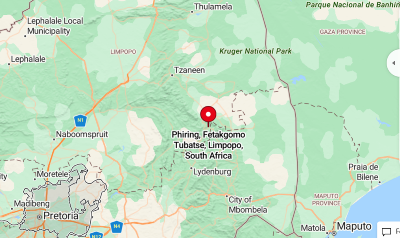 While there they tried very hard to get some form of business to provide income for the families in that village. They worked to get grants, got a laundromat built with electrical lines as well. They simultaneously worked on a lot of other project including medical issues related to HIV/AIDs and a local orphanage. The people were very poor,, often with only dirt or mud floors in their houses. Dale and Elene helped them tote water from a distance in large empty pickle barrels via a truck. Cows would try to jostle them too sometimes, in order to get some of that water. Cows proved to be a dilemma sometimes for them. In order to keep the grass from growing too tall and hiding snakes around their house, the cows would graze there. But sometimes they blocked their path to the outhouse!Mass transit travel was horrendous and they felt like they were packed in like sardines. On board the bus they saw all sorts of folk and animals, even a live chicken being transported. They were not allowed to have a car there, so had to rent a car when one was needed. After just three months they felt like giving up. But their family members and friends came to visit, easing their transition and helping them to adapt to life in South Africa. And they took an occasional break from it all by going to a Bed & Breakfast in another city that had more amenities (like indoor plumbing.) They never experienced any hostility thankfully, even though they were the only two white faces in the crowd.
Their assigned translators or counterparts reassured them when they asked if they should be concerned,
by saying |
|||
| PAGE 6 |
|
by Linda Smith Some new ways to stay healthy and active from local professionals! In general, home & garden clubs serve a variety of helpful purposes in their communities. Not just gardening techniques, sustainability, and environmental awareness but they also promote wellness, stress reduction, gentle exercise, and a sense of purpose and fun. In that much broader sense, the February 2025 Tradition Home & Garden Club Meeting featured three speakers with complementary approaches to health and wellness. Debbie Moeller and Mary Ann Lester gave speaker introductions and explained that since women commonly juggle multiple roles, we often forget to take care of our own wellbeing. This presentation was to help us find additional measures to focus on our own health as we serve others. Karen, Fayer, Tai ChiKaren Fayer, a Tradition resident, began teaching Tai Chi locally about three years ago.
It is an ancient martial art that is thousands of years old and has many forms from gentle to active.
Besides series of routine movements it also encompasses deep breathing and mindful focus.
Some benefits from the practice of Tai Chi are lower blood pressure, joint flexibility, better circulation,
improved balance, decreased fall risk, enhanced sleep, stress reduction, and mild cardiovascular exercise.
Cindi Caron, Massage TherapistCindi Caron, also a resident here, spoke next. She stated that she is licensed in SC and pointed out the benefits
of Medical Massage. These benefits are improved mood, better muscle relaxation, stress relief,
pain relief, and better body mechanics. It further encourages the internal release of the body's
natural pain relievers called endorphins and reduces the stress hormones such as cortisol. |
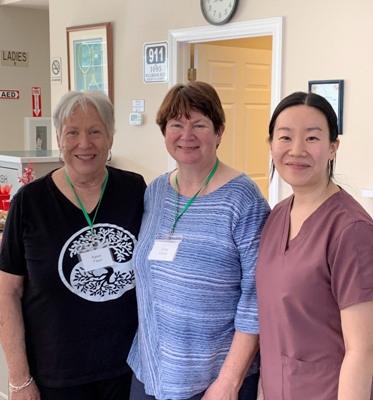 Karen Fayer, Cindi Caron & Eva Yu Eva Yu, Acupuncture TherapistThe third speaker was Eva Yu, a local acupuncture therapist who was trained extensively in China.
She also received training in Tai Chi and is familiar with other complementary treatment modalities.
She explained that acupuncture has been around for thousands of years. It focuses on the body's energy meridians,
not just the neuromuscular system. |
| PAGE 7 |
PUZZLES FOR A CAUSE by Bonnie Lasinski & Linda Smith On April 8th a Puzzle Party was held at the Residents's Club House as a fun fundraiser for Philanthropic Educational Organization (PEO) International. It consisted of 10 teams of 2 persons each per table. It was open to Tradition residents and other PEO chapter members for a $25 donation fee. Each team had the same 300 piece jigsaw puzzle and two hours to complete it. The team that finished first received Amazon gift cards. Snacks and beverages were provided before and after the timed event. The puzzles and Amazon gift cards were generously provided by The Alliance Restaurant Group of Baltimore MD. PEO hosted this fun competitive event to raise money to provide education through scholarships, grants, and loans to needy and deserving women. It is a nonprofit organization founded in 1869 and has grown to nearly half a million members in the US and Canada. The organization's mission is to help women advance through education and celebrate their achievements. 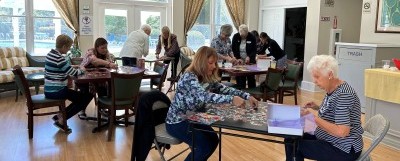 Bonnie Eaglin and Bonnie Lasinski, members of the local PEO, accepted donated treasures for the Tradition Garage Sale that was
held on May 3rd; all proceeds went to the organization.
|
|
|||||
| PAGE 8 |
Willbrook Corridor Beautification Associationformerly known asWillbrook Road District by Dave Phillips & Ted Wroth | |||||
|
Our Tradition community has a line item on our annual budget that provides for the work done by this well established group,
so that our 405 residents do not have to individually make payments.
In fact, quite a few neighboring HOAs and POAs also budget to pay for this association's work as well.
Some of these neighboring communities are Willbrook, Reserve Harbor and Marina, Avian Forest, Reunion Hall,
the 3 golf courses associated with Mingo, and others. However, this Willbrook Corridor Beautification Association was formed and has been an essential entity since the 1990s when not only Tradition but also the other area communities were established. It pays for the landscaping, signage, water (sprinkler system), the fountain in front of the Hampton Inn, the upgraded bike path and related projects. Originally, Willbrook Boulevard was a private road for which the local residents through this association's efforts were responsible rather than the government. At least 10 years ago though, that roadway as well as Reunion Drive and the portion of Kings River Road that borders the Tradition community were turned over to the county to pave and maintain. But the Willbrook Corridor Beautification Association remains responsible for all of the rest, including 61 street lights. |
|
A number of years ago American flags started popping up along the Willbrook median. It turned out that a gentleman living in Willbrook began going out on his own, starting with 10 flags in front. The residents liked the idea, so the project was acquired and soon maintained by this association too. It gradually grew from 10 to 61 flags, one for each street light. Our landscaper, Starwood Landscaping kindly puts them up and takes them down free of charge for the patriotic holidays. As we have been taught the protocol for respecting our national flag, it must be taken down each night unless it is illuminated. Therefore these flags, one lit by each street light, can be left on display 24 hours per day until finally taken down. Unlike the flags put up along highway 17 where there is not adequate lighting, necessitating that they must be put up each morning and taken down each night by volunteers. But flags eventually wear out and need to be replaced for various reasons in order to keep this dedicated practice going. With that in mind, Ted Wroth recently volunteered to assemble 6 new American flags that measured 3X5 feet each and mounted them each on an 8 foot conduit pole. He used a jig to guide and hold an aluminum conduit as he drilled two holes near the top about 36 inches apart in order to attach the flag with zip ties. Then he drilled a short pilot hole in a solid core golf ball. He then completed by drilling a larger hole with a 3/4 inch drill bit so that he could glue a golf ball on the top of each conduit pole. The next flag display will be on Memorial Day Weekend. Remember while your are honoring all those who gave their lives for our country, give a nod of thanks to Ted Wroth for his efforts. |
|||
|
What is the 988 Lifeline? by Linda Smith
Dialing the 988 Lifeline leads you to a special crisis line right here in South Carolina.
It is available 24 hours per day/365 days per year. The night is darkest just before the dawn |
| PAGE 9 |
Tradition Men's Golf Club TMGCEach Monday, golfers are paired by teams and the group plays a chosen game for that day. Examples of games are: 2 Nets per team, One Net per Cart, One Gross and One Net, Blind Teams, etc. Varying playing partners ensures meeting a lot of people in a short amount of time and the group is always open to new games!
An unexpected and unfortunate event occurred at The Tradition Golf Club just last Wednesday. Two of our residents came out to the parking lot after Gold Tees to find their golf clubs had been stolen right off the back of their carts. It was later discovered that Tradition was not the only golf club; others in the area, including Founders also reported thefts of golf clubs. Your valuables will be better protected |
.jpg) As the pool water warms Tradition residents are pulling their
suits and water shoes out of storage to begin another season of
water aerobics. .jpg)
|
||||||
| PAGE 10 |
by Bonnie Eaglin & Linda Smith Mexican Train is a domino game that most likely originated in China and
was brought to Cuba by Chinese sugar cane field workers. When the game migrated to Mexico
it was called
The objective of Mexican Train Dominoes is to be the first player to get rid of all their dominoes by
creating trains that connect to the central Community Mexican Train was started by Ron and Bonnie Eaglin in 2008.
After announcing the game was to be held at the Resident's Club House and all residents were invited, we had a great response.
The first Mexican Train night had more than 30 attendees, everyone brought snacks and it was a very happy environment.
In 2016 the Eaglin's passed the torch onto Vickie Wythe and Kathy Berko as the new leaders who, in turn, passed it along to Elene Hertweck and Jan Shepherd in 2022.
In 2025 Mexican Train expanded from one to two nights per month. The group meets the 1st and 3rd Wednesdays
at 6:30 pm in the Residents Club House. The entry fee is just $1 to play, same as it was in 2008. |
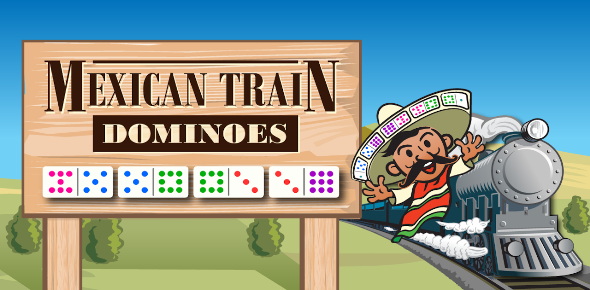
Photos of Mexican Train participants over the years .png) .png)
.png) .png)
If you are interested in joining the group or curious about the game come on out. |
| PAGE 11 |
.jpg)
.jpg)
.jpg)
.jpg)
.jpg)
|
Often our residents combine household sales at one location,
to maximize the availability of
TRADITION'S ALL4PAWS AMBASSADOR
All4Paws to start a new program called
Please plan to drop items, in either a box or large bags, off by the mailbox at 244 Sandfiddler Drive on THURSDAYS. Monique will then take those donations to All4Paws once each week. |
| PAGE 12 |
.png) .png) .png)
.png) .png) |
FROM THE EDITOR
|

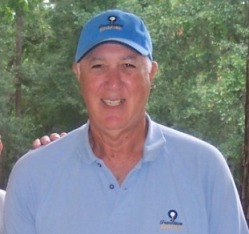
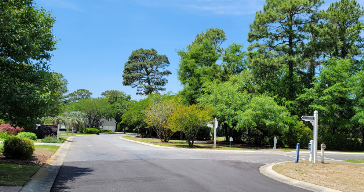
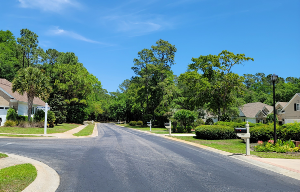
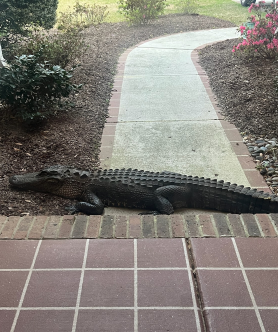
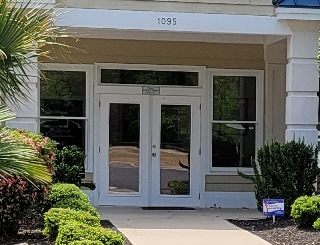
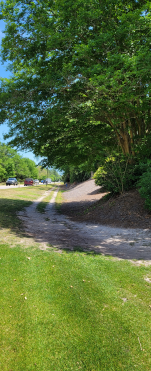
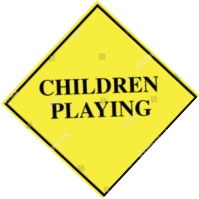


.png)
.png)

.jpg)
.jpg)
.jpg)

